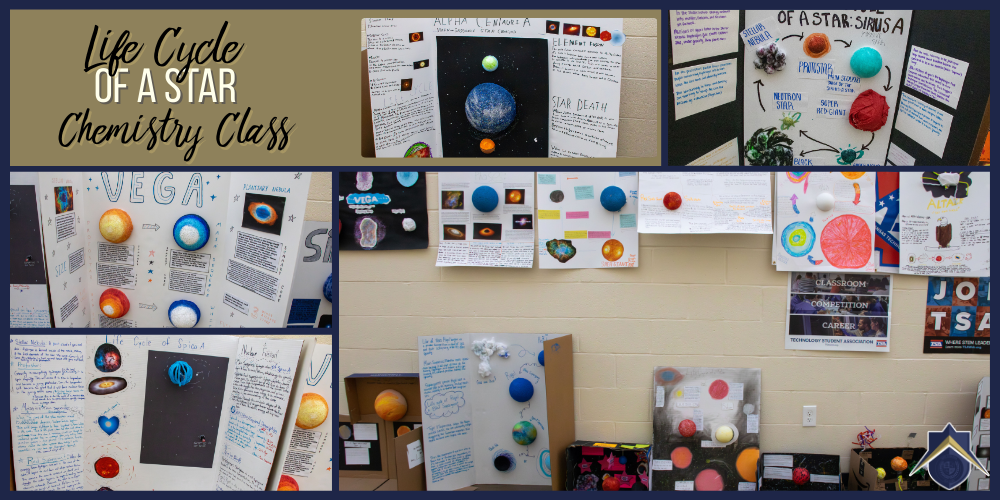High school chemistry students recently completed a collaborative project focused on the life cycle of a star. Across all chemistry classes, students worked in groups to research and create display boards that traced a star’s journey from its birth in a stellar nebula to its final stages as a white dwarf, neutron star, or black hole.
The project combined science learning with creativity, as students designed models, visuals, and explanations to represent each stage—protostar, main sequence, red giant, planetary nebula, and white dwarf. Their work demonstrated not only a strong understanding of stellar evolution but also how the elements studied in chemistry are created inside stars and recycled throughout the universe.
By completing this project, students were able to see how chemistry connects to astronomy and gain a deeper understanding of where the materials that make up our world—and everything in it—originate. The finished display boards have been showcased in the hallway for others to learn from and enjoy.

